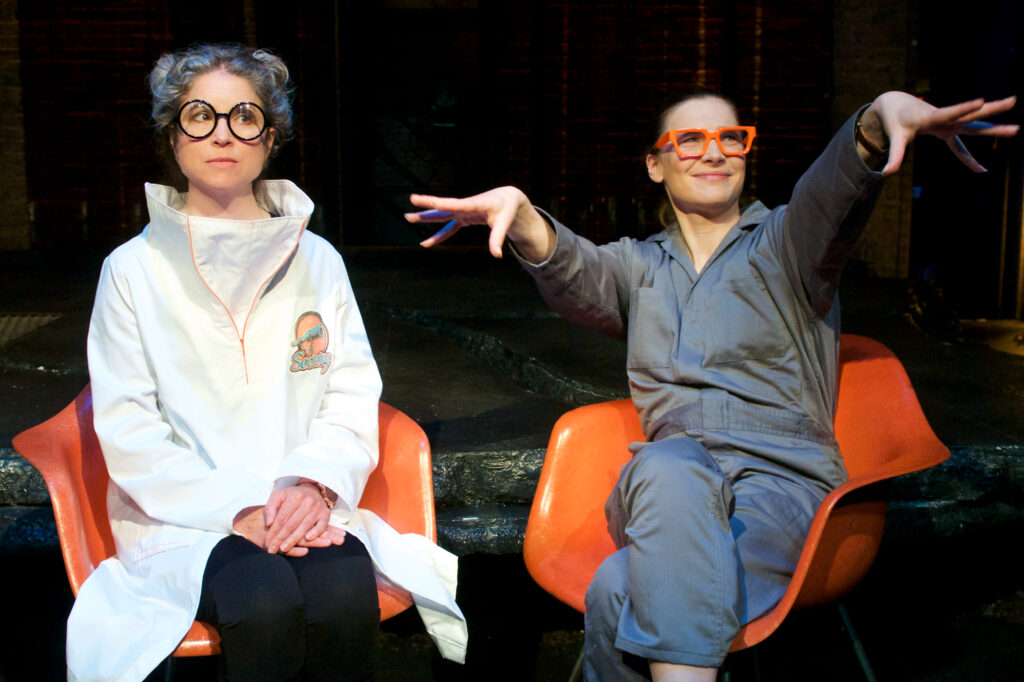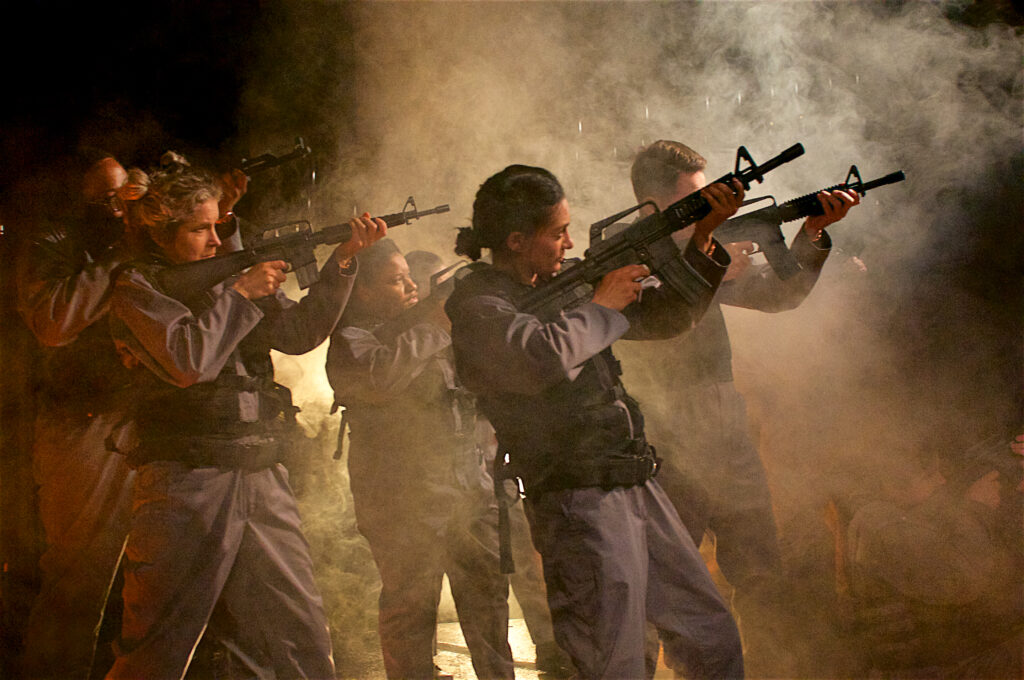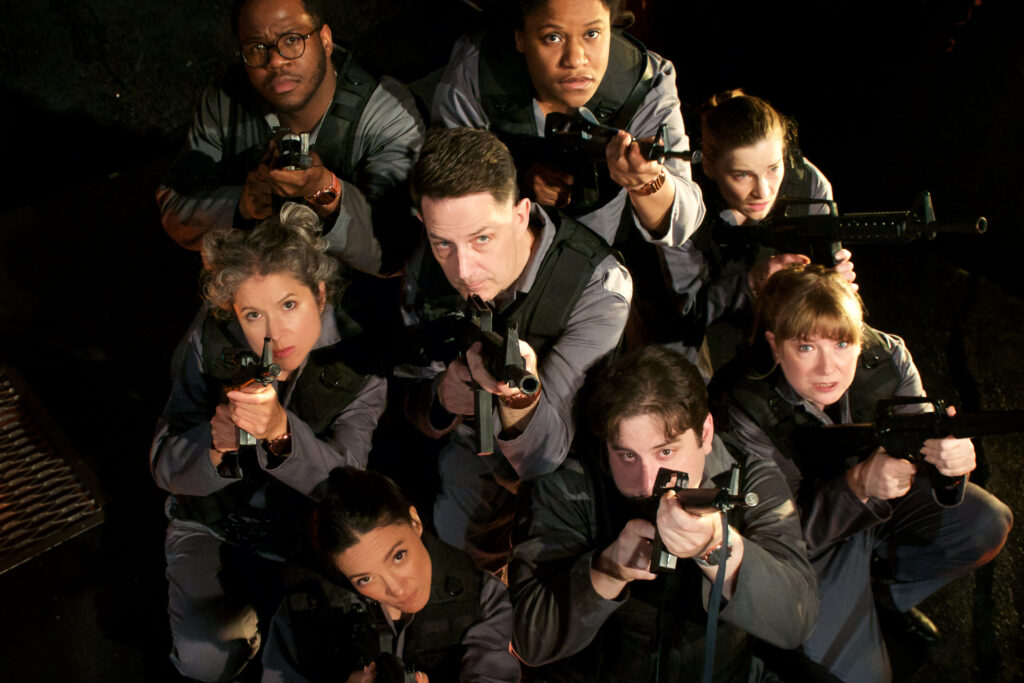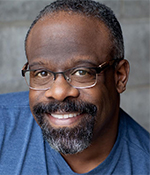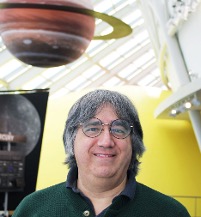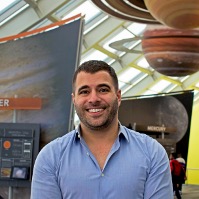Chicago Theatre Review
INVADERS FROM MARS
By: Colin Douglas
June 3, 2025
HIGHLY RECOMMENDED
In one of the first books to ever depict a conflict between extraterrestrials and the human race, prolific English author H.G. Wells (The Time Machine, The Invisible Man) wrote a science fiction novel that proved so popular that it’s never been out of print. Originally serialized in Victorian periodicals, War of the Worlds was eventually published as a complete novel in 1898. The story, which was set in London and the nearby vicinity, introduced the word “Martians” as the invaders from Mars. But the term didn’t refer simply to beings from the planet Mars but included anything otherworldly or unknown. Wells’ novel went on to inspire an entire genre of fiction about intergalactic invasions and space travel.
In addition, the novel has, to date, inspired seven film adaptations, as well as a television series, graphic novels, video games and various sequels written by other authors. But probably the most famous adaptation of War of the Worlds is Orson Welles’ 1938 radio broadcast. The story was reset in the United States and presented as a breaking news bulletin. The media event led to mass panic and, eventually, public outrage because the radio audience had been so gullible.
Lifeline Theatre Ensemble members John Hildreth and Heather Currie have teamed up again, following their terrific adaptation of Kurt Vonnegut’s, Cat’s Cradle, to bring the H.G. Wells classic to the stage. The fight for the survival of mankind has been cleverly set in present-day Illinois, particularly in and around Chicago. Wisely, the playwrights have crafted their particular version of Wells’ story as broad melodrama. The characters are exaggerated and overblown and their dialogue often draws laughter from the savvy audience.
The plot, which is madcap, fast-paced and action-packed, depicts a group of scientists from a fictional Illinois Scientific Institute. They’ve observed mysterious bursts of light on Mars through their gigantic telescope. Suddenly reports are transmitted about meteor-like objects crashing to the earth around the Chicago suburbs. These outer space invasions prompt both the scientists and the military to further investigate.
In one of the craters they find a cylindrical spaceship that, when approached by the people, fires heat rays and poisonous black smoke at them. To everyone’s horror, the cylinders begin growing into huge metal Tripods. The monsters begin stalking the land, killing everyone in their path and creating mass chaos. In the midst of all this death and destruction, the main character, Professor Wittington, becomes separated from his wife, Dr. Wittington. Suddenly the fight for the survival of the state becomes personal.
Directed with energy, wit and a comet-full of creativity, longtime Ensemble member Heather Currie has instilled this production with her trademark love of physical theatre. The show starts with a bang—literally—and zips along at breakneck speed. Supported by a crackerjack production team, particularly Scenic Designer Lindsay Mummert, Lighting Designer Sarah Riffle and Sound Designer Joe Griffin, Ms. Currie’s cast is an ensemble company, in the truest sense of the word. Each of her eight talented actors portray multiple roles, constantly adapting their costumes, wigs and props, along with their voices and physical embodiments, to become hundreds of different individuals.
Mark Mendelsohn nicely portrays a charming Professor Wittington, and other characters, with Jocelyn Maher beautifully playing his physician wife, Dr. Wittington, as well as others. Seen at Lifeline in such shows as CAT’S CRADLE, ARNIE THE DOUGHNUT and JANE EYRE, Anthony Kayer is always a standout in any cast. He plays Professor Ogilvy, and a myriad of additional characters. His spot-on portrayal of the Governor of Illinois will remind smart theatergoers of our current Head of State. Amanda Link, another familiar face at Lifeline, is out-of-this-world as cyborg, Assistant Professor Whitehurst. The cast is filled out by Kamille Dawkins as the masked Miss Montgomery, Cael Fevrius as Owusu (and hilarious as the robotic Chucky), Karla Serrato as Bautista and more, and Mandy Walsh as Bronski, et al.
Providing a fine finale to their 42nd season, Lifeline Theatre shows why they’re considered one of Chicago’s best. Their mission has always been to explore, interpret and reimagine books and other literary works, in order to create theatre that moves us beyond the margins of our own lives. In fulfilling this goal, Lifeline has done it again. Don’t miss this contemporary, 95-minute version of WAR OF THE WORLDS for a rollicking riot of Science Fiction fun about invaders from Mars.
The Chicago Sun-Times
Lifeline Theater’s campy take on ‘War of the Worlds’ is light-years away from Wells’ classic
John Hildreth’s stage adaptation takes a far less terrifying and exponentially more campy approach to the H.G. Wells classic.
By Catey Sullivan
June 4, 2025
★ ★ ★
When H.G. Wells’ late 19th-century novel “War of the Worlds” — a tale of a ruthless Martian invasion — aired in a radio adaptation in 1938, listeners thought the extra-terrestrial onslaught was real. Mass panic ensued as residents fled their homes in terror and took up shotguns to fend off the aliens.
History repeated itself in 1949, when a radio station in Quito, Ecuador, broadcast a translation of the sci-fi classic. Ecuadoreans first panicked and then — when they realized they’ve been fooled— they rioted, setting fire to the radio station. Ten people died in the chaos, including three radio station employees trapped in the fire.
Such is the astounding power of Wells’ iconic story of aliens from above posing an existential threat to the denizens of planet Earth. Rogers Park’s Lifeline Theatre opened their own take on “War of the Worlds” this week in John Hildreth’s adaptation, which takes a far less terrifying and exponentially more campy approach to the tale.
Directed by Heather Currie, “War of the Worlds” is more silly than scary. Often almost farcical, the production’s aesthetic is more “Lost in Space” than “Independence Day.” It’s comical-unto-ludicrous throughout. (There’s even a robot wedding in this version.) Currie has shaped a production that is in turns funny, stupid and a tad ingenious.
The story remains fundamentally the same, although Hildreth has set it locally: Martians invade Chicago’s suburbs. Before the final battle, the Martians set their sights on Woodridge, Carol Stream, Glendale Heights, Bloomingdale, Oak Park, Inverness and Palatine, among many other nearby locales.
A scrappy group of scientists at a lab “outside Skokie” fights the invasion with science and guns. Some get eaten or heat-gunned to death along the way. Eventually, (spoiler alert if you are unaware of how the roughly 130-year-old tale turns out), microorganisms save humanity, and earthlings continue frittering away their lives with “petty concerns.”
The earliest scenes reveal the show’s slapstick, screw-ball sensibility. The esteemed Professor Ogilvy (Anthony Kayer) makes a brouhaha about the lab’s powerful telescope — which turns out to be a large magnifying glass. The Martians’ murderous tentacles take the form of fringed, hanging car wash flaps and giant plastic slinkies.
Along with Ogilvy, the band of Martian-fighting scientists include the prescient Montgomery (Kamille Dawkins); Prof. Wittington and his wife Dr. Wittington (Mark Mendelsohn and Jocelyn Maher, respectively), plus lab workers Bautista (Karla Serrato) and Bronski (Mandy Walsh). Finally, we have a pair of human-like robots, Asst. Prof. Whitehurst (Amanda Link) and Owusu (Cael Fevrius.) Most are double-cast as various imperiled earthlings.
Kayer carries much of the production, first as the shaggy, silver-haired, impassioned lab chief and later as a clout-seeing blogger who feels like a mash-up between Johnny Knoxville and Rasputin. He also plays the Governor of Illinois, a very Pritzker-looking fellow who vows he’ll vanquish the Martians even as they’re devouring his constituents.
Link’s chirpy Asst. Prof. Whitehurst has the clipped rhythm of a metronome. Ironically, the robot professor is the ensemble’s most emotionally authentic, empathetic member. While the others scream and shout and get gobbled up with massive melodramatic impact, Whitehurst remains an understated vessel of guileless empathy.
As Prof. Wittington, Mendelsohn is the voice of reason amid a story splattered with over-the-top moments. He also tackles much of the copious exposition — In “War of the Worlds,” we’re told as much as shown what’s happening. That’s exasperating to varying degrees; but it is arguably the most efficient way to hold the narrative together in the absence of a cast of thousands and an equally epic special effects budget.
The technical design does a lot of the heavy lifting when it comes to the Martian attacks. Joe Griffin’s sound design clangs and booms with metallic thunder as the Martians make themselves known. Sarah Riffle’s lighting blasts the audience with retina-searing impact as the Human v. Martian death match plays out. Nicholas Quinn’s projections capture the staticky, pixilated snow of television screens severed from the grid, and the flickering heads of TV talk shows.
There’s little menacing or even unease-provoking about Lifeline’s Martians. “War of the Worlds” is a caper, not a catastrophe. As in Wells’ original, it’s nature’s tiniest microscopic beings that end up being the real heroes because the earthlings of “War of the Worlds” basically have no idea what they’re doing. And as with the original, you can extrapolate from that what you will.
The Chicago Tribune
In Lifeline Theatre’s ‘War of the Worlds,’ comedy wins out over human drama
By: Emily McClanathan
June 3, 2025
★★1/2
Lifeline Theatre’s new adaptation of the 1898 H.G. Wells novel “The War of the Worlds” has many of the hallmarks of a campy sci-fi B movie: cheesy dialogue, exaggerated stock characters and visuals with the low-budget charm of mid-aughts “Doctor Who.” With these bold stylistic choices by adapter John Hildreth and director Heather Currie, the play satirizes contemporary American society in an unconventional take on the science fiction classic. While Lifeline’s version has its entertaining moments, the comedic approach comes at the expense of the story’s human drama.
Hildreth’s loose adaptation changes the setting from southern England to northern Illinois, name-checking a litany of familiar cities, suburbs and rural townships throughout the play. The scientists who first discovered unusual activity happening on Mars work at “the renowned Illinois Technological Institute, outside of Skokie, Illinois,” a fictional locale that is repeatedly introduced with the exact same wording until it becomes a mantra of sorts. This setting makes sense for a Chicago production, more so than English towns such as Woking and Weybridge, but the hyperlocal references sometimes feel a bit too cute.
Professor Wittington (Mark Mendelsohn) narrates much of the action, and the dialogue is interspersed with clips of fictional TV news broadcasts — a nod to the format of Orson Welles’ infamous 1938 radio adaptation, which reportedly convinced some listeners that aliens were actually attacking the United States. The professor and a small crew of scientists from the Institute, including an artificially intelligent humanoid called Assistant Professor Whitehurst (Amanda Link), investigate a series of strange explosions on the surface of Mars. Months later, the mystery is solved when cylindrical space capsules begin to crash on Earth, letting loose an army of giant metallic tripods wielding weapons that blast deadly heat rays.
With Illinois at the epicenter of a national and potentially global crisis, the play satirizes a range of all-American ideologues: conspiracy theorists, doomsday preachers, isolationists and jingoistic military types. Even J.B. Pritzker gets a sendup with Anthony Kayer’s performance as the fictional governor of Illinois. Reading “The War of the Worlds” as a satire is not a novel interpretation; Wells himself acknowledged that the book’s anti-imperial themes were inspired by the brutality of European colonialism. But at Lifeline, the comedic tone is dialed up so high that the social commentary loses some of its bite.
The production team augments the cast’s over-the-top performances with floor-to-ceiling tentacles (set designer Lindsay Mummert), bursts of green light from the heat rays (lighting designer Sarah Riffle) and warbling sound effects that evoke a 1950s sci-fi film (sound designer Joe Griffin). The onstage violence is occasionally macabre but never gruesome; when Whitehurst, the android, loses both arms in battle, their silver-tipped severed limbs go flying (props designer Jenny Pinson), but none of the human characters shed visible blood. Later, during the dissection of a captured Martian, the creature’s blue and orange color scheme mimics the Illini jacket that the governor previously appeared in (costume designer Aly Amidei).
What gets lost in this inventive production are the human relationships that could give it more heart. For most of the play, Professor Wittington thinks that his wife, Dr. Wittington (Jocelyn Maher), has been killed by the Martians, but this emotional arc is overshadowed by the narrative weight his character bears. Since Lifeline can’t recreate an alien invasion onstage any more realistically than Shakespeare could cram armies into his “wooden O,” audience members must exercise their imaginations to picture the battles that Professor Wittington describes. There’s little room for character development amid the action sequences, so the play doesn’t have much of an emotional impact despite its high stakes for humankind.
The inhabitants of Earth never get answers to the question of what they’ve done to deserve this catastrophe, but the play points the finger back at humanity by claiming that war is our greatest export and that the militaristic Martians offer a glimpse into our collective future. Toward the end, Whitehurst has a crisis of faith, revealing that the scientists have programmed the android with some sense of belief in god and an afterlife. It’s a strange interlude that hints at the often-fraught relationship between science and religion.
While hardcore sci-fi fans may be disappointed by this “War of the Worlds,” those who appreciate the genre’s more irreverent side will likely enjoy it. Lifeline never shies away from scaling epic stories to fit onto its small stage, and the company’s gutsy creativity is evident in this latest world premiere.
Chicago Reader
War of the Worlds, Chicago-style
Lifeline gives H.G. Wells’s sci-fi classic a local and contemporary makeover.
By: Rob Silverman Ascher
June 4, 2025
RECOMMENDED
Orson Welles’s notorious 1938 radio broadcast of an adaptation of The War of the Worlds reportedly duped people into thinking they were hearing a real broadcast. John Hildreth’s adaptation of H.G. Wells’s 1895 novel, presented in a world premiere production at Lifeline Theatre directed by Heather Currie, has its own agenda. Hildreth’s play, set in the Chicago area in the present day, is an irreverent take on the original with an eye toward building community in times of desperation. Using the source material as a guide, Hildreth follows the exploits of a group of scientists, led by Professor Wittington, as they face off against both extraterrestrial threats and earthbound skeptics. Hildreth’s text resonates with today’s COVID-related anti-intellectualism and scientific skepticism, a dialectic handled pointedly but not without subtlety.
Mark Mendelsohn gives Wittington the cool nobility of an E.R.-era George Clooney, humbly and efficiently leading a ragtag crew across a ravaged landscape. On the whole, the ensemble is wonderful, with each cast member playing a variety of roles and switching nimbly from part to part. Anthony Kayer delivers excellent pompous buffoonery as Ogilvy, Wittington’s disbelieving mentor, and as a handful of other rubes and charlatans. Amanda Link is a highlight as Assistant Professor Whitehurst, the team’s lovable artificial life-form. Sarah Riffle’s lighting design, dramatic and textured, is a perfect counterpoint to the play’s performances and Lindsay Mummert’s spare, evocative set.
While Hildreth’s adaptation has its weak spots, often leaning on hard-to-stage sci-fi tropes to build excitement and falling into audience-service local references, the cast’s gameness and the excellent design elements of Currie’s production make up for an imperfect script. Lifeline’s War of the Worlds is stylish fun, and an assured take on an infamous classic.

